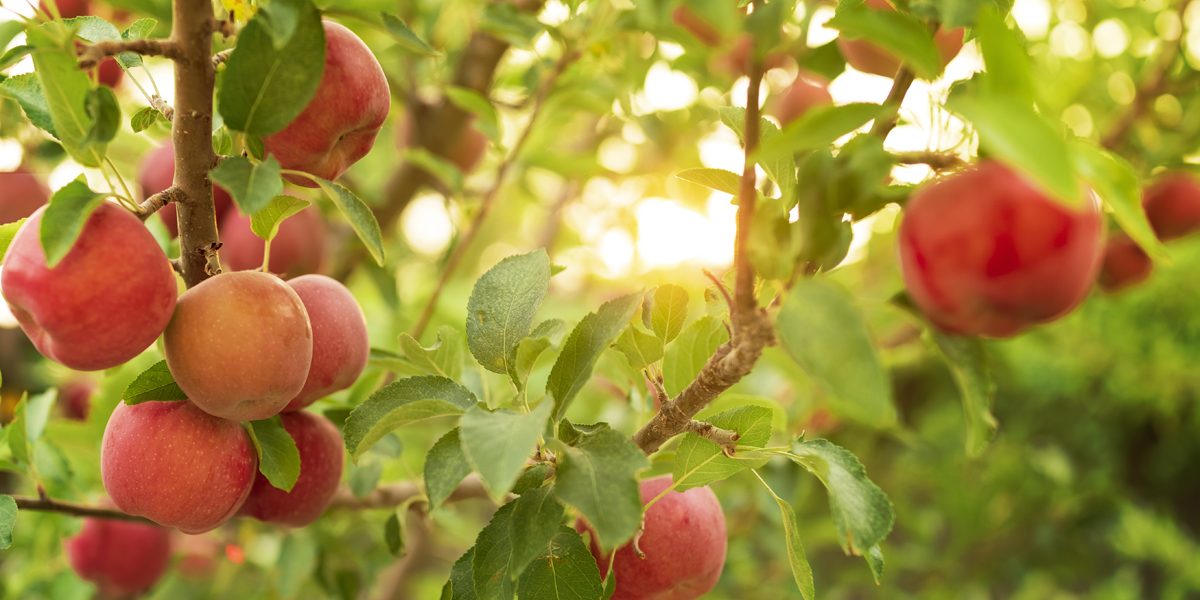Yes, you can grow apple trees in Arizona, but success largely depends on the region and specific conditions within the state. Arizona’s diverse climate offers some challenges for apple cultivation, but with the right varieties and care, it’s definitely possible. Here’s what you need to know about growing apple trees in Arizona:
1. Climate Considerations:
- Low Desert (Phoenix, Tucson, Yuma):
- Challenges: The extreme heat of summer and the mild winters can make apple trees difficult to grow in these regions. Apple trees generally require a chilling period (cool temperatures) during winter to promote proper bud development, which may be insufficient in these warmer areas.
- Solution: Choose low-chill apple varieties that require fewer chill hours (the number of hours below 45°F) for bud development. Varieties like ‘Anna’, ‘Dorsett Golden’, and ‘Tropic Sweet’ are ideal for desert regions because they need fewer chilling hours (around 200-400 chill hours).
- High Desert and Mountain Zones (Flagstaff, Payson, Prescott):
- Advantages: These areas experience cooler temperatures and colder winters, making them more suitable for growing traditional apple varieties. Apple trees in these areas will get the necessary chilling hours, and you can grow a wider range of apple types, including those that require higher chill hours (up to 1,000 chill hours or more).
- Varieties to Consider: Standard apple varieties like ‘Granny Smith’, ‘Fuji’, ‘Gala’, and ‘Red Delicious’ can thrive in these cooler climates. Be sure to choose varieties suited to your specific elevation and chill hour requirements.
2. Best Apple Varieties for Arizona:
- Low-Chill Varieties (for lower desert areas):
- ‘Anna’: This is one of the best apple varieties for the desert and requires only about 200 chill hours. It produces sweet, crisp apples that ripen early in the season.
- ‘Dorsett Golden’: Another excellent low-chill variety that requires about 300 chill hours. It’s a sweet apple, often used as a pollinator for other apple varieties.
- ‘Tropic Sweet’: This variety is well-suited for hot, dry climates and has a low chill requirement of around 250 hours.
- ‘Tropic Beauty’: A medium-sized apple with a sweet flavor, needing around 300 chill hours.
- Standard-Chill Varieties (for higher elevations):
- ‘Granny Smith’: A tart, green apple that is a favorite for pies and baking.
- ‘Fuji’: A sweet, crisp apple that performs well in areas with a more moderate climate.
- ‘Red Delicious’: Famous for its sweet flavor, this variety thrives in areas with sufficient chill hours.
3. Planting and Care Tips for Apple Trees in Arizona:
- Planting Location:
- Apple trees need full sun, so choose a location that gets at least 6-8 hours of sunlight per day.
- In desert regions, you may want to plant apple trees in an area that is somewhat protected from the intense afternoon sun, as it can scorch the leaves and fruit.
- Ensure proper spacing for air circulation to reduce the risk of diseases.
- Soil and Watering:
- Apple trees prefer well-drained soil that is slightly acidic to neutral. Amend your soil with organic matter to improve its structure and retain moisture.
- Watering is essential, especially in the desert climate. Keep the soil consistently moist, but not waterlogged. Water deeply and less frequently to encourage deep root growth.
- Mulching around the base of the tree helps retain moisture and keep the roots cool, especially in the hot Arizona summers.
- Chill Hours:
- For apples to produce good fruit, they need a certain number of chill hours (temperatures between 32°F and 45°F) during the winter months. In lower desert areas, it may be difficult to meet the chill requirements for traditional apple varieties, so choosing low-chill varieties is crucial.
- If you live in a region with lower chill hours, consider planting two or more different apple varieties to improve cross-pollination and increase the chances of fruit production.
- Pruning and Maintenance:
- Prune apple trees annually in the late winter or early spring to remove dead or damaged branches and shape the tree. Proper pruning helps improve air circulation and encourages better fruit production.
- Keep an eye out for pests like aphids and caterpillars, and be vigilant about diseases like apple scab or rust, especially in more humid areas.
4. Harvesting and Timing:
- Apple trees in Arizona will typically bear fruit in the late summer to fall, depending on the variety and your location. Early varieties like ‘Anna’ can be harvested as early as June or July, while traditional varieties like ‘Fuji’ and ‘Granny Smith’ will ripen in the fall.
- Be sure to harvest apples when they are fully ripe for the best flavor and texture.
5. Potential Challenges:
- Frost: Although Arizona is generally a warm state, some areas (especially in the higher elevations) may experience late frosts, which can damage the flowers or fruit. Be prepared to protect your trees with frost covers if needed.
- Watering Needs: Arizona’s dry climate requires consistent watering, especially during the summer months, to keep apple trees healthy and productive.
- Pest Control: Watch for common pests like aphids, spider mites, and fruit flies, which can affect apple trees.
Conclusion:
In Arizona, you can successfully grow apple trees, especially by selecting the right varieties for your specific climate. For the lower desert regions, opt for low-chill varieties like ‘Anna’ or ‘Dorsett Golden’, while in higher elevations, you can grow traditional varieties that need more chilling hours. With proper care, watering, and attention to climate conditions, apple trees can thrive and produce delicious fruit in Arizona’s diverse landscapes.

If you’re ready to choose and have a pomegranate tree planted at your Mesa home contact the knowledgeable and helpful folks at your local A&P Nursery.[/vc_column_text][/vc_column][/vc_row]




